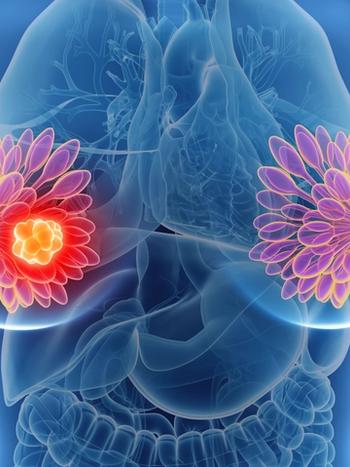
Oncology NEWS International
- Oncology NEWS International Vol 7 No 3
- Volume 7
- Issue 3
Panel Says Test Certain Herbs, Additives for Carcinogenesis
RESEARCH TRIANGLE PARK, NC--A federal panel has recommended to the National Toxicology Program (NTP) that it review and possibly test a group of products, including three herbs, for their potential to cause cancer or to lead to reproductive and developmental problems.
RESEARCH TRIANGLE PARK, NC--A federal panel has recommended to the National Toxicology Program (NTP) that it review and possibly test a group of products, including three herbs, for their potential to cause cancer or to lead to reproductive and developmental problems.
The recommendations of the Inter-agency Committee for Chemical Evaluation and Coordination were released by Kenneth Olden, PhD, director of the National Institute of Environmental Health Sciences (NIEHS) and the NTP, which is headquartered at the NIEHS.
"A recommendation for testing does not necessarily mean a substance is a carcinogen or mutagen but often reflects--as in several of these cases--that substances have gone into widespread use without as much testing as, in retrospect, we would like," he said.
The products recommended for review include 2-acetylpyridine, which is a fragrance material, direct food additive, and constituent of natural essential oils; and myristicin, which occurs naturally in carrots and parsley, and in certain spices such as black pepper, anise, nutmeg, and mace.
Also on the list are 2-chloropyridine, an intermediate chemical in the manufacture of some cosmetics, pharmaceutical, and agricultural products, with considerable occupational exposure; and glycoluril, a slow-release nitrogen fertilizer, whose resins have also been used in paint and other coatings.
Two Fiber Brighteners
The panel also listed two fiber brighteners: 4-mythoxy-N-methyl-1,8-naph-thalimide, a fluorescent agent used for synthetic fibers and as a coating for specialized papers; and 7-(2H-napthol[1,2-d]triazol-2-yl)-3-phenylcourmarin, used not only as a fabric brightener but also in plastics, photographic film, toners, and food packaging.
Finally the advisory committee urged that the NTP review three herbs--comfrey, goldenseal, and saw palmetto.
Comfrey, available commercially as a powdered root or leaf, as well as in capsule form, is espoused by some for use as an anticancer agent, sedative, stimulant, diuretic, and antihemorrhagic. It is also sold for use in salads and as a herbal tea. In 1993, following reports of toxic effects after the ingestion of comfrey, the American Herbal Products Association recommended that the herb only be used externally.
Goldenseal, which grows in the hardwood forests of Canada and the eastern United States, is sometimes used as a self-prescribed medicine for a wide range of health problems, including cancer, digestive and hemorrhagic disorders, upper respiratory congestion, mucous membrane inflammation, and skin and eye problems. Its constituent alkaloids berberine and hydrastine would also be studied for potential car-cinogenesis.
Saw palmetto ranks sixth on the list of best-selling dietary supplements in the United States and is used extensively to self-treat benign prostate hyperplasia (BPH). Controlled studies have failed to find it effective for the disorder, and the FDA considers it mislabeled when sold for the treatment of BPH.
Make-up of the Committee
The interagency committee consists of representatives from the National Cancer Institute, Consumer Product Safety Commission, National Institute of Occupational Safety and Health, Agency for Toxic Substances and Disease Registry, Food and Drug Administration, National Library of Medicine, Occupational Safety and Health Administration, Department of Defense, Environmental Protection Agency, and National Institute of Environmental Health Sciences.
Articles in this issue
almost 28 years ago
ACS Takes Aim at Proposed Federal Tobacco Billsalmost 28 years ago
Loan Defaults Disqualify 1,402almost 28 years ago
FDA Gives OK to Seven New Cancer Drugs in 1997almost 28 years ago
HIA Chemo Promising in Colon Cancer Liver Metsalmost 28 years ago
Proposed Budget Spells ‘Good News’ for NCIalmost 28 years ago
Proposed Budget Has Extra Funds for FDA Teen Smoking Effortalmost 28 years ago
CRFA Awards 16 New Grants and Fellowshipsalmost 28 years ago
Cancer Pain Treatment Requires Clear Terminology About ‘Addiction’almost 28 years ago
‘Staging’ of the Managed Care Market Is Crucialalmost 28 years ago
NCI, EPA Attempt to Resolve Differences Over Childhood CancerNewsletter
Stay up to date on recent advances in the multidisciplinary approach to cancer.

























































































